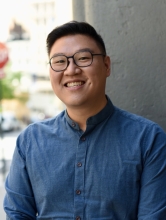
By Nyissia Spruill, Lilly Padía, Pamela D’Andrea Martínez, and Hua-Yu Sebastian Cherng
The coronavirus epidemic has upended our notions of normal. It has exposed the faults and shadows rooted in the foundation of the country, allowing a clear and sobering view of the race and class bias that, invisibly and not so invisibly, affects us all from education to healthcare. In this four-part blog series, three doctoral students and a tenured professor review ways in which online learning platforms may be wielded more equitably within tertiary settings, particularly addressing gaps in how the online learning platform serves the education of university students. Our goal is to help those who teach online–a mode of instruction that has skyrocketed with the COVID-19 pandemic–reflect on the intersections between teaching, technology, and inequality.
Online platforms can support learning in different ways. Some courses only take place online while others combine synchronous in-person meetings with both synchronous and asynchronous online sessions. A new form that may emerge in the Fall 2020 semester is parallel online and in-person teaching, where one classroom of students is divided into two groups: one group can gather in a physical space (as well as an online space) while the other only online. Whatever form online teaching takes in response to COVID-19, we hope the considerations offered in this blog series allow for deeper conversations and the development of mechanisms for all students to receive the highest quality of education possible, which must be an equitable one.
Accordingly, this four-part blog series includes examinations of common aspects of teaching through a lens of equity:
Part 2: Reconceptualizing Participation. In this piece, we reflect on how even long before COVID-19, university instruction has often defaulted on equitable understandings of student participation. We provide ideas for how to rethink narrow and normative ideas of participation in the shift to online teaching and in our response to COVID-19.
Part 3: Instructor-student relationships. In this piece, we discuss how one-size-fits all teaching limits relationships with students. Relationships are crucial for equitable instruction, especially in these times when understanding what students face will make the difference between whether or not instructors are supporting learning. We offer ways to structure instructor-student relationships more equitably online and offline.
Part 4: Examinations. In our final post, we reflect on the taken-for-granted aspects of examinations as an assessment tool, including the many assumptions instructors might make about student access when adapting exams for online learning. We offer considerations for diverse types of assessments during online instruction and other ways to address issues of access.
Our reflections were created from our own experiences as university instructors as well as from being students. While our intent is the same, our voices differ. Each blog post was written by one of us and edited by the rest. It is important to note that there are any number of inequitable situations that can be in place within student experiences before an online class begins. Access to hardware, software, stable high-speed internet, and a personal space to log on are important elements for successful online learning. While the focus on improving online education, particularly around the pandemic, has been on serving as many students as possible, we center our reflections on those who are excluded from quality online classroom learning experiences. Online education has always been touted as innovative, and here we offer thoughts on how these new ways of teaching can address inequalities rather than perpetuate or exacerbate them in a new platform. Last, while our reflections concern university-teaching, we hope these lessons are helpful for those who teach in other settings in light of the possibility that the platform may have a more permanent use in post-COVID-19 learning possibilities.





